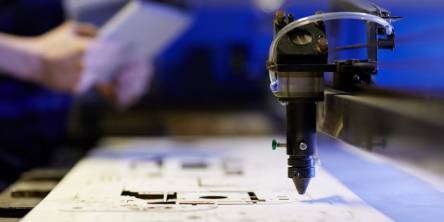Navigating Lean Manufacturing: A Simplified Blueprint for Operational Excellence

Many companies love Lean Manufacturing because it makes things better. It boosts productivity, makes quality top-notch, and saves money while speeding up production. Lean Manufacturing isn't a strict set of rules; think of it as an intelligent way of thinking. It's all about cutting out unnecessary stuff (the "8 wastes") and focusing on what customers want.
But here's the twist – the unified Lean Manufacturing model. It's not just a model; it's the key to unraveling the magic, simplifying the journey, and transforming Lean Manufacturing from a complex notion into a straightforward and effective strategy for operational success.
But here's the tricky part – people talk about Lean Manufacturing in many different ways, which can get confusing. With this simpler version, people can easily understand Lean principles and see how important individuals are.
The Lean Manufacturing Challenge:
Here are some key challenges people often face.
● Blurred Principles:
● Multiple Lean Manufacturing models exist but need clarification.
● Principles overlap, differ in detail, or use unfamiliar terms.
● Overlooking the Human Factor:
● Many models focus on technical aspects, sidelining the importance of people.
● The human touch is crucial, yet it's only sometimes explicitly addressed.
● Tool Confusion:
● Various tools and methods are described, adding to the complexity.
● Readers, especially newcomers, may need help to grasp when and where to apply these tools.
● Expertise Overload:
● Lean Manufacturing can seem like a complicated science, especially for those new to it.
● There's a risk of feeling lost in the sea of information, making it seem confined to Lean experts.
To address these challenges, a modernized Lean Manufacturing model was introduced, aiming to simplify complexities and offer a clearer understanding of Lean principles. It puts people at the center, simplifying the process and offering a more precise understanding by blending various concepts.
The Unified Model:
It rely on three main models: the "TPS house" (Toyota Production System), "Lean thinking," and "Toyota Way 2001."
Let's break them down:
● "TPS House" (Toyota Production System):
● This model is like the foundation of Lean Manufacturing pioneered by Toyota.
● It outlines the core principles and practices for efficient production.
● "Lean Thinking":
● This model emphasizes a mindset of continuous improvement and efficiency.
● It focuses on eliminating waste and optimizing processes to enhance overall performance.
● "Toyota Way 2001":
● Developed by Toyota, this model provides a comprehensive approach to Lean Manufacturing.
● It encompasses continuous improvement, respect for people, and a commitment to excellence.
Together, these models form a toolkit for understanding and implementing Lean Manufacturing principles.
Breaking Down Lean Manufacturing with Unified Model:
1. Identify Value:
Let's start at the beginning – understanding what the customer truly values. The unified model keeps it simple using tools like Critical Quality characteristics (CTQ) and Quality Function Deployment (QFD). It's about pinpointing what really matters.
2. Map Value Stream:
Navigating the complicated waters of value streams becomes straightforward with the "design, map, measure, optimize" approach. The unified model examines the seven wastes, implements Design for Manufacturing and Assembly (DFMA), and optimizes the factory layout for maximum efficiency.
3. Create Flow:
Smooth sailing through production without unnecessary waste is the goal. To make it happen, the unified model uses principles like Jidoka, Heijunka, Standardized Work, the 5S, SMED, and Total Productive Maintenance (TPM).
4. Establish Pull:
Think of it as ordering just what you need when needed. The unified model simplify the concept of a pull production system with the Kanban system, reducing work-in-progress and aligning production with demand.
5. Continuous Improvement:
Here's where the magic happens – the commitment to getting better. Challenges, Kaizen (continuous improvement), and Genchi genbutsu (going to the source) keep the momentum.
The Heart of Lean Manufacturing: Valuing People
In Lean Manufacturing, there's something super important called "Respect for people." It's not a complicated step or rule; it's the core, the soul of Lean production.
According to Toyota, this respect has two sides:
● Respect:
● It's about treating others well, trying to understand each other, and taking responsibility to build trust.
● Teamwork:
● Here, it's all about helping each other grow, sharing development opportunities, and making sure everyone in the team performs their best.
These ideas sound different from what we usually think about respect. For Toyota, it means seeing each person as responsible and capable of solving problems and contributing to the team. If someone does a good job and adds value to the team, they get respected. And don't worry, the more personal and "human" side is also there – treating every worker as an individual is critical.
A Clear Path to Operational Excellence:
To wrap it up, in the simplified Lean Manufacturing model, the idea of respect means something special. It's not just thinking about people; it's putting them at the center, making them super important to how Lean Manufacturing works. In simple terms, it's like saying people aren't just considered; they're the heartbeat of Lean Manufacturing.
Similar Articles
In the rapidly advancing landscape of high-tech manufacturing, electronics, and materials science, diamonds are no longer just gemstones they’re high-performance materials redefining what’s possible in technology.
A business in the manufacturing industry today has to ensure that it chooses the precision-engineered components suppliers keenly since the competition is very stiff
Selective Laser Sintering, or SLS, has established itself as one of the most reliable and widely used 3D printing technologies. This method is valued for its ability to produce complex, durable, and high-quality parts without the constraints of traditional manufacturing.
In the retail and display industry, the visual appeal of products is paramount. Customers are constantly drawn to displays that are not only eye-catching but also provide an immersive experience.
As previously established, CO2 laser technology operates by shining a high-power infrared beam on a mixture of gas that contains carbon dioxide, nitrogen, and helium. This technology is well known for the fact that it is able to engrave onto a variety of materials such as wood, glass, plastic, leather, and even some metals with high precision and without contact.
CNC Machining has emerged as a vital technique in the current production process, as it provides an efficient and accurate means of manufacturing items with complex geometries. This technology is applied across aerospace, automobile, and medical devices manufacturing fields, and various other industries.
Find out what to look for in a reliable CNC machining manufacturer, from quality assurance and advanced technology to customer service, for efficient project success.
Save on pipe relining costs with smart planning. Learn how to reduce expenses through targeted repairs, material choices, off-peak scheduling, and competitive bids.
When it comes to metalworking, the quality of your equipment can make a significant difference in the efficiency and accuracy of your projects. Among the essential tools in any metalworking shop is the sheet metal brake, which plays a crucial role in bending and shaping metal sheets









